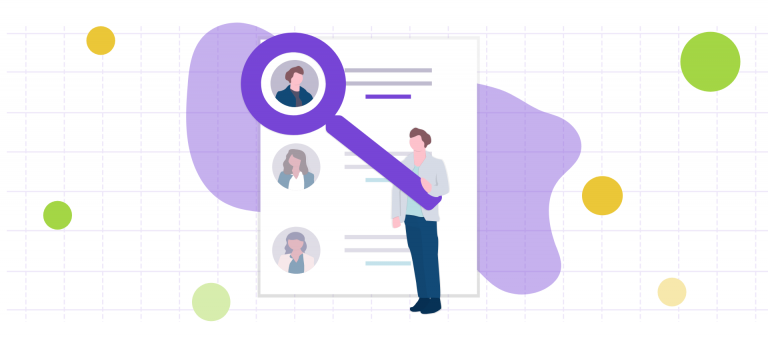Marketing Your Online Auction: 5 Digital Strategies

Virtual auctions are an opportunity for your nonprofit to raise funds and engage your donors. Of course, even the most exciting, well-planned auction can only be a success if guests know about it and are persuaded to attend by your marketing campaign.
Nonprofit marketing has evolved over the years, and while traditional strategies can drive some attendance, most nonprofits find success through digital marketing and outreach. Your online silent auction already relies on technology to function. For many nonprofits, the tech tools supporting your auction should also help your marketing team spread the word about your auction.
This means that your auction planning team doesn't need to be made up of tech experts to leverage your software and launch effective digital marketing strategies. To help your team get started planning your online marketing campaign, this guide will explore five strategies nonprofits can use to market their auctions, including:
- Spotlight high-value items.
- Send personalized invitations.
- Use multi-channel marketing.
- Partner with a business.
- Pair with a peer-to-peer fundraiser.
Auctions have several unique advantages over other fundraisers that make them easier to market. This guide will explain how your team can make the most of these advantages, especially when marketing to an online audience.
1. Spotlight high-value items.
While many guests will attend your auction primarily to support your cause, a good portion of attendees will likely be interested first and foremost in winning something valuable. Your marketing campaign should appeal to this interest and get attendees excited about your event by showcasing high-value items.
Handbid’s silent auction guide outlines a few types of auction items that are particularly effective for drawing attention during marketing campaigns:
- Experiences. Guests are more likely to be interested in items they can’t buy at the store or experience in their day-to-day lives. Experiences from vacations and day trips to classes and event tickets make for memorable prizes. Plus, guests who win these prizes are likely to discuss them with friends and family, spreading the word about your nonprofit even further.
- Unique or rare items. Potential guests may become more interested in attending your event if you have auction items that have limited supplies. For example, autographed photographs, collector’s items, and unique, one-of-a-kind artworks are all rare, and your auction might be the only place guests will ever have a chance to obtain them.
- Bundles. Not every item your procurement team manages to gather will be a showstopper. However, by bundling lower-value items together into prize baskets, your nonprofit can increase its overall appeal and demonstrate to guests that they’re getting just as much value for their dollars as they would with a singular, high-value item.
Determine which items you would like to preview in your marketing campaigns. Some nonprofits may prefer to spotlight a few high-value items and keep the rest of their catalog a mystery. By contrast, others prefer to make everything public, allowing guests to browse and plan their bids ahead of time.
2. Send personalized invitations.
Your nonprofit likely has a base of long-term supporters you’ll need to get the word out to as well. Events like an online auction can be used as a relationship-building opportunity in addition to helping your nonprofit raise funds. Use your donor database to find donors who have attended similar events in the past and send them a personalized invitation.
You can improve your messages with two customization strategies to tailor your outreach to each donor:
- Personalization. Your supporters are individuals, so your nonprofit should treat them as such. Address each supporter by name and include other personal details in your messages, such as previous event attendance and how long they’ve contributed to your nonprofit. Keela’s email marketing tool makes it easy for you to incorporate personalized details, based on each donor’s giving history, into your appeals.
- Segmentation. Instead of creating one invitation template, group your supporters based on shared characteristics and write separate templates catered to these unique audiences. For example, you might divide supporters based on whether they donated at your last auction. For those who did, you could include their donation amount and thank them for their past contribution. Then, for those who did not, you could mention that you hope they find an item they like at your new auction and add a preview of one of your showcased items.
Combining these two strategies allows your nonprofit to tailor your communication to each supporter, crafting a unique, individualized experience. Doing so lets donors and supporters know that your nonprofit sees and appreciates their contributions, helping to strengthen their connection to your nonprofit while also earning guests for your event.
3. Use multi-channel marketing.
Digital communication is fast and usually low-cost. However, most of us are used to seeing multiple advertisements a day and tend to brush off marketing messages the first time we see them. Your nonprofit can get around this by marketing through various channels, helping to reinforce your nonprofit’s brand while creating multiple touchpoints.
However, every communication channel has its own rules for success. To help your nonprofit coordinate a multi-channel marketing approach, here are three digital marketing channels and how to find success through them:
- Email. Email is one of the most popular communication formats for nonprofits, and it’s easy to see why. Email provides the space for your nonprofit to explain the details of your auction and link to your guest registration page. Use Keela’s email marketing tool to increase your sending potential and make sure each of your emails is personalized, even if you’re reaching out to thousands of donors and supporters at a time.
- Social media. Social media platforms allow your nonprofit to reach an exceptionally large audience at a minimal cost. Choose a platform with good photo support capabilities like Instagram, and take photos of the items you plan to showcase at your auction. Posts headed by attractive images are more likely to draw attention and be shared more widely outside your core support base. Utilizing a photo generator can further enhance your visuals, ensuring your posts stand out and attract attention across social media channels.
- Texting. If you have your donors’ phone numbers, consider reaching out by text message to let them know about your auction. Text messages tend to have higher open rates than email, but they also need to contain a shorter, more condensed version of your marketing appeals. Focus your message on explaining the who, what, when, and why of your auction and provide a link for supporters to get more information from your website.
Make sure your nonprofit has analytics tools ready to monitor your engagement rates on each platform. Doing so will allow you to identify which channels you’re having the most success with and refine your approach on other platforms based on your data.
4. Partner with a business.
Auctions require your procurement team to reach out to multiple businesses in order to obtain auction items. During these conversations, not every business will be able to offer a tangible item to donate. However, many of them might be able to help promote your auction through their communication channels.
When your procurement team pitch businesses, they should include multiple ways the business can offer their support. For most auctions, the most helpful types of contributions are physical items, monetary donations, marketing assistance, or some combination of the three. In exchange, your nonprofit promotes its services and names them as a sponsor at your event.
Discuss with your business partners what their marketing approach will look like. For example, you might ask them to promote your auction through internal emails to employees or share posts on your social media account with their followers. Doing so also helps the business publicize its connection to your nonprofit, improving its reputation.
5. Pair with a peer-to-peer fundraiser.
Auctions pair well with a variety of other fundraisers and events such as hybrid and virtual galas and crowdfunding campaigns. They also can be run alongside a peer-to-peer fundraiser, which can help attract attention from potential guests outside of your core support network.
Peer-to-peer fundraisers work by leveraging your supporters’ connections with friends, family, coworkers, social media followers, and other individuals in their lives. Often people donate to peer-to-peer campaigns because of their connection to an individual supporter promoting your cause, rather than a connection to the cause itself.
You can use a peer-to-peer campaign to earn donations and help supplement your auction and gain more followers. Allow your supporters to accept monetary donations and ask them to promote your auction or even a select few items available for bids. Online auctions that take several days to complete pair especially well with peer-to-peer fundraisers, as they give your supporters time to reach out to their networks while the bidding is ongoing.
With today’s technology, marketing your nonprofit’s auction online has never been easier. Make sure your employees use the right digital strategies to get your nonprofit noticed while also promoting what your auction has to offer. Partner with businesses and supporters to help share your auction’s most exciting items and invest in software that can support your marketing efforts ahead of time.
.svg)



